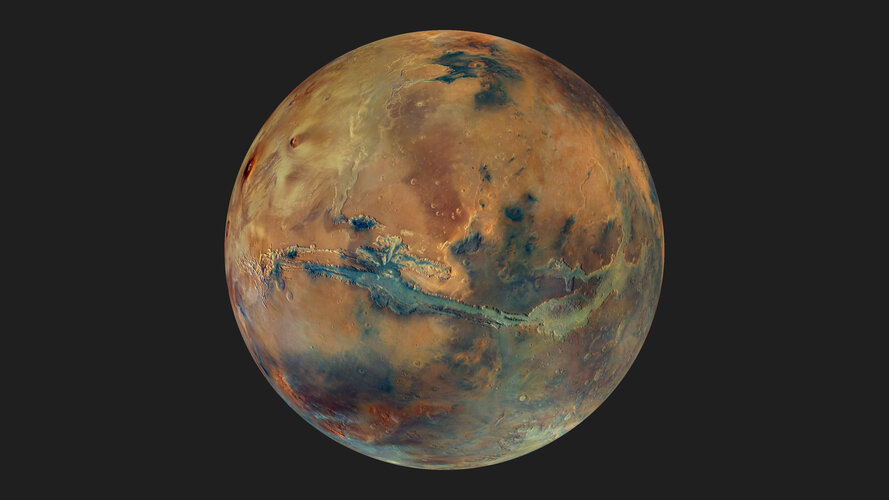Each colour a different material
While beautiful in its own right, the mosaic also provides fascinating information about Mars’ composition, revealing an unprecedented variety and detail of colours across its surface.
Mars is famous for its reddish colour, which is caused by high levels of oxidised iron. However, large parts of the planet appear to be rather dark and blue-toned here. These are grey-black basaltic sands of volcanic origin that form far-reaching, dark layers of sand across Mars. They pile up as they move in the wind, creating imposing sand dunes and dune fields within impact craters.
Material weathered by water, on the other hand, tends to look lighter. The two most common water-weathered minerals on Mars, clay and sulphate minerals, appear particularly bright on such colour composites; their presence was established by the OMEGA spectrometer on Mars Express. The presence of these minerals signals that liquid water existed on Mars for a long time, weathering and altering rock over time to form significant clay deposits such as Mawrth Vallis (a former outflow channel not shown in this view but previously observed by HRSC).
Sulphate minerals are visible here within the Valles Marineris canyon system, as seen most clearly in the annotated image. Here, however, they are covered by a thin veneer of dark sand, but their impressive colour variations can be seen on closer look. Unlike clay deposits, sulphate minerals indicate more acidic environmental conditions that would be less friendly to life.



